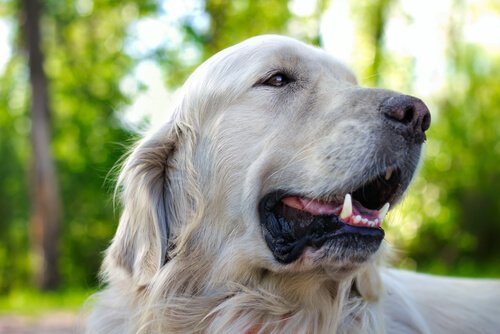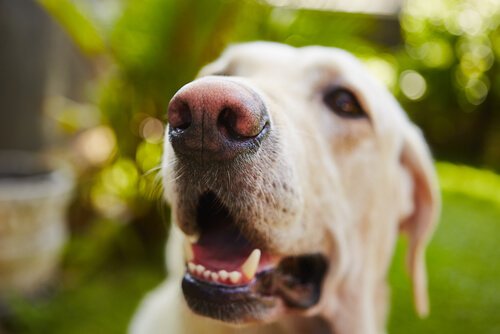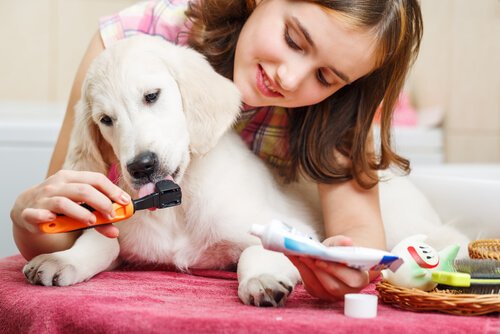Sensitive Gums in Dogs

Sensitive gums are a common problem among adult animals. The condition usually appears after their third birthday, and is usually more common in smaller dog breeds.
To avoid subsequent problems and further decay that could lead to loss of teeth, it’s necessary to carry out a thorough dental hygiene and to be attentive to the signs that may appear, such as:
- Tumors in the mouth
- Inflammation, bleeding, swelling and/or gingival recession
- Pockets of pus between the teeth
- Bad breath
- Chewing pain (this can be detected by noticing that the dog is biting carefully, or tentatively, and even by a lack of appetite).
The different stages of periodontal disease
Periodontitis is one of the most common conditions in dogs. There are three stages:
- Gingivitis: Inflammation of the gums caused by excess bacterial plaque. At this stage, the problem is mild and it can be solved with daily brushing and monitoring of the dog’s teeth.
- Moderate periodontitis: Here, periodontal abscesses appear. There is pus, gum retraction, and some teeth are loose.
- Severe periodontitis or pyorrhea: This is the third stage, and the most dangerous one, as it’s followed by tooth loss, together with an increase in pockets of pus and bad breath. At a more advanced stage, pyorrhea can lead to diseases that involve other organs such as the heart, liver, and kidneys.

Treatment for dogs with sensitive gums
Consult your vet if you think your pet has sensitive gums. Professionals will be able to make a proper diagnosis and indicate how to treat the problem.
The vet can also teach you how to properly brush the dog’s teeth, and even show you products designed specifically for this purpose.
A professional can also give you a list of teeth-cleaning-foods that can be added to the dog’s diet –as well as prescribing vitamin and mineral reinforcements. Also, if you think it’s necessary, he may perform a deep, thorough teeth cleaning.
Other things to consider
You should know that the color and texture of your pet’s gums are a good indicator of their health: good or bad.
The dog’s gums should be pink, moist and soft to the touch. Anything different from this is an indicator of a serious problem –you should consult with a veterinarian.
Pay attention to these following instances in which your dog would require immediate medical attention:
- Pale colored gums are the result of dehydration, anemia, poor circulation, and poisoning.
- Red gums are usually a sign of infection, of injuries in the mouth, or of heat stroke.
- When the gums are bluish, there is a lack of oxygen and so it could lead to suffocation.
- A yellow color indicates the possibility of hepatitis.

How to take care of your dog’s gums
As with everything in life, it’s better to be safe than sorry. In other words, prevent disease by following these tips:
- Schedule teeth cleanings with your vet on a regular basis
- Brush your pet’s teeth, as instructed by a professional on dog care
- Feed your dog according to the recommended requirements for its age, size and other special traits or conditions it may have
- Check your dog’s mouth periodically
- Chat about any doubts you may have with your vet
All cited sources were thoroughly reviewed by our team to ensure their quality, reliability, currency, and validity. The bibliography of this article was considered reliable and of academic or scientific accuracy.
- Albuquerque, C., Morinha, F., Requicha, J., Martins, T., Dias, I., Guedes-Pinto, H., … Viegas, C. (2012). Canine periodontitis: The dog as an important model for periodontal studies. Veterinary Journal. https://doi.org/10.1016/j.tvjl.2011.08.017
-
Polson, A. M. (1986). The relative importance of plaque and occlusion in periodontal disease. Journal of Clinical Periodontology. https://doi.org/10.1111/j.1600-051X.1986.tb01428.x
-
Albuquerque, C., Morinha, F., Requicha, J., Martins, T., Dias, I., Guedes-Pinto, H., … Viegas, C. (2012). Canine periodontitis: The dog as an important model for periodontal studies. Veterinary Journal. https://doi.org/10.1016/j.tvjl.2011.08.017